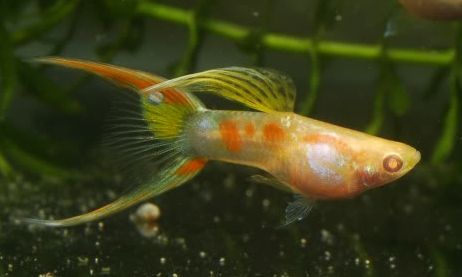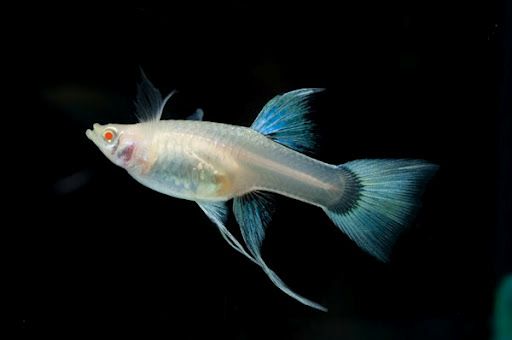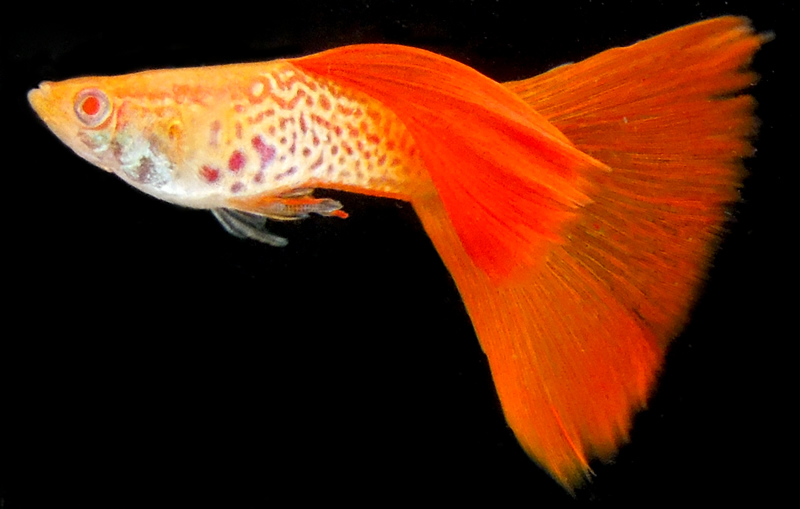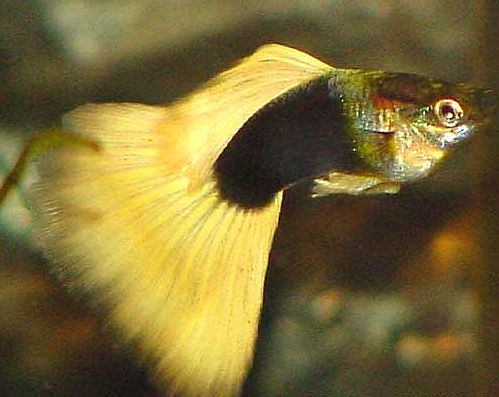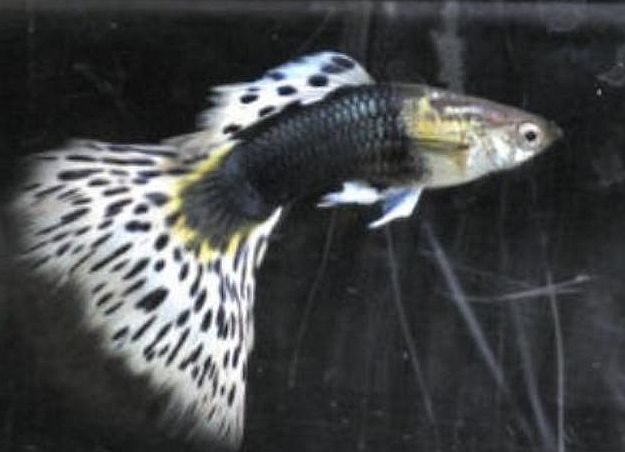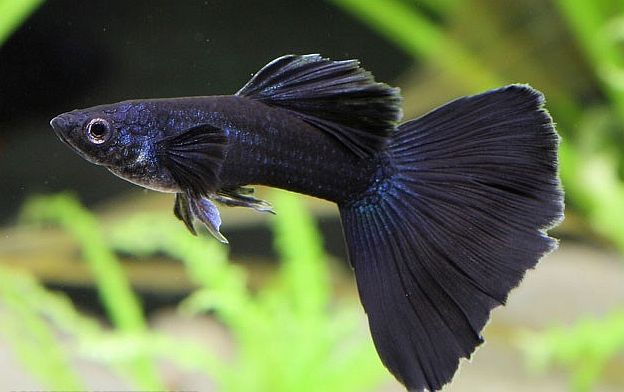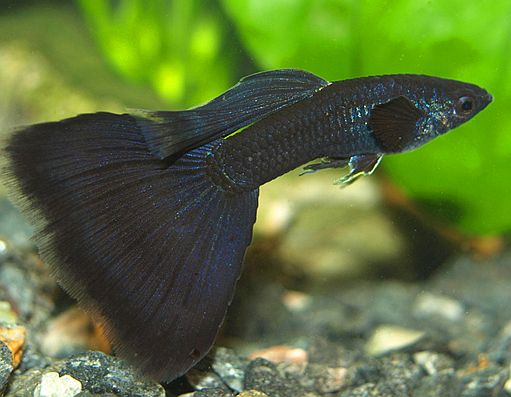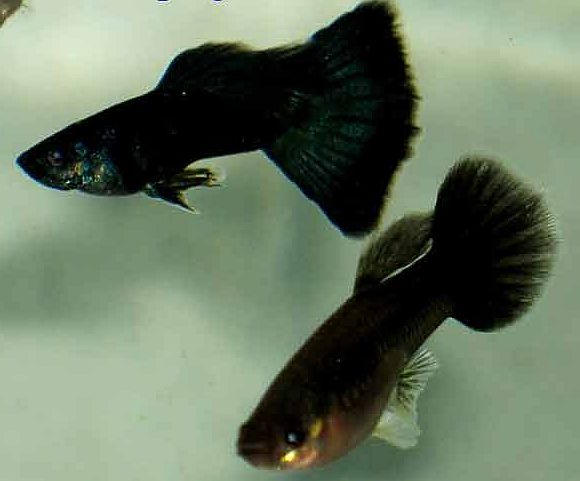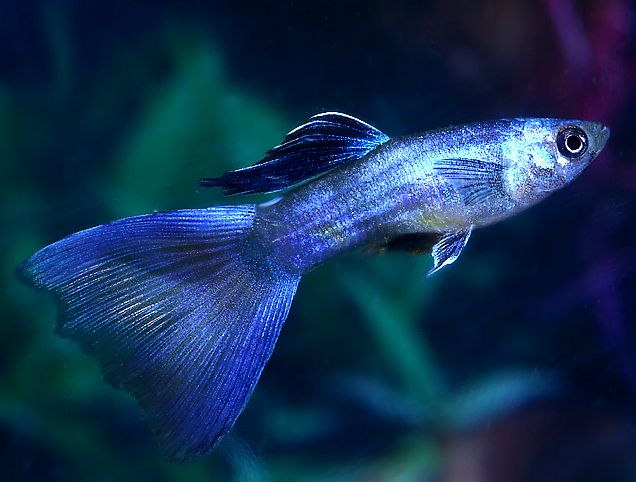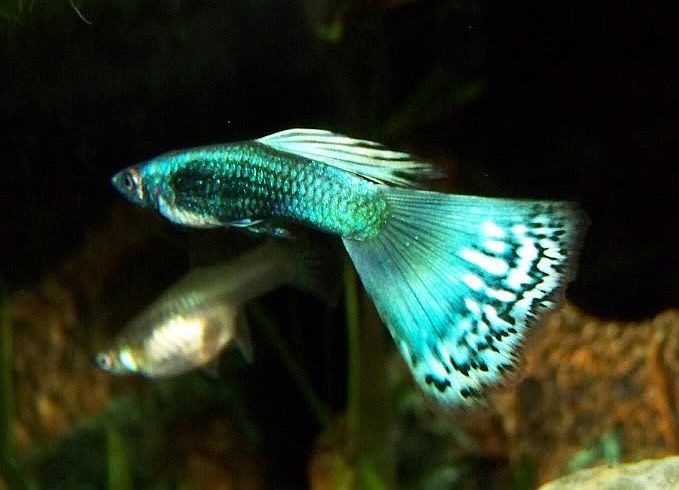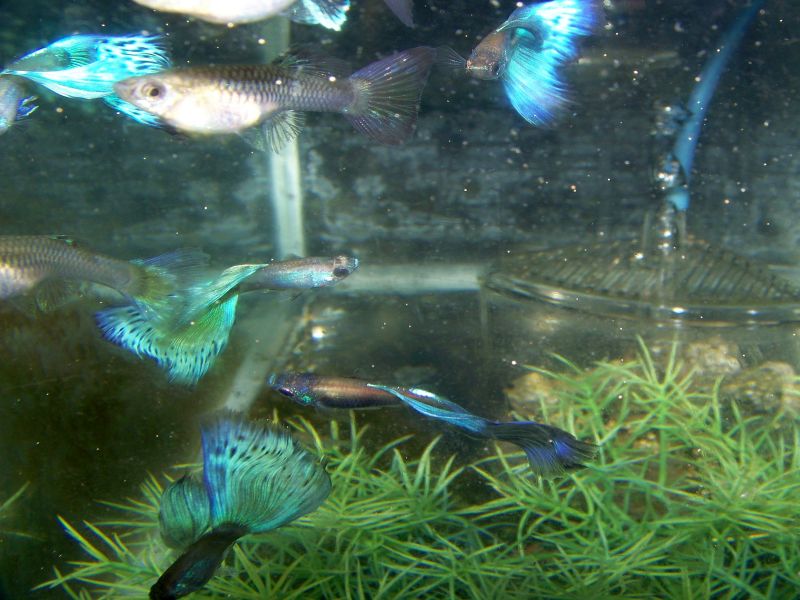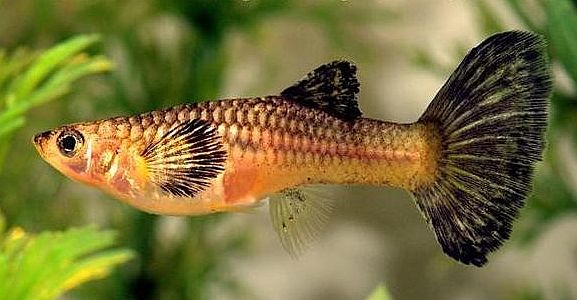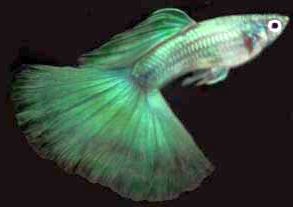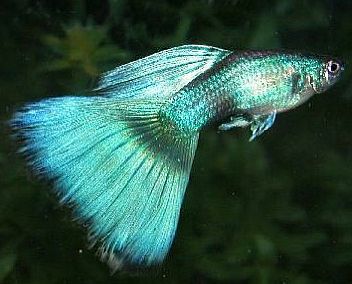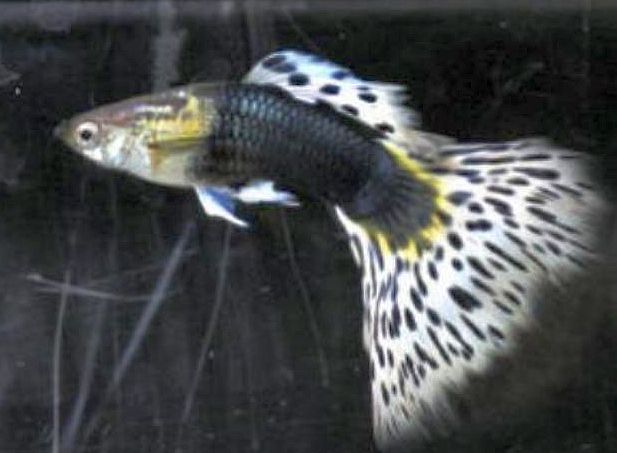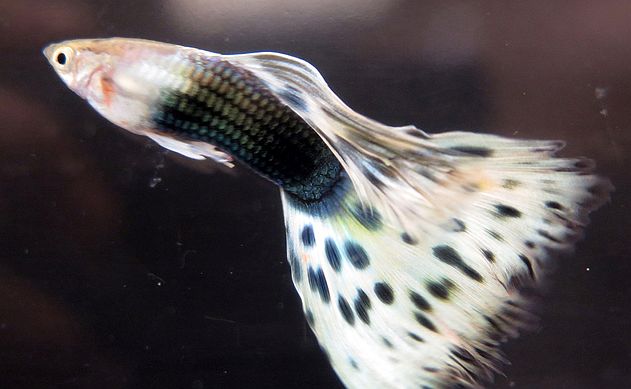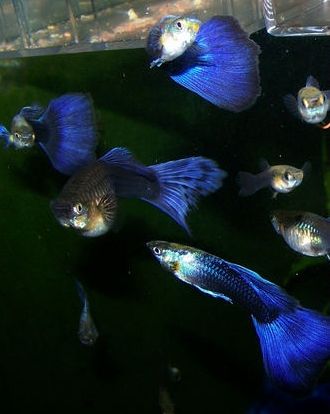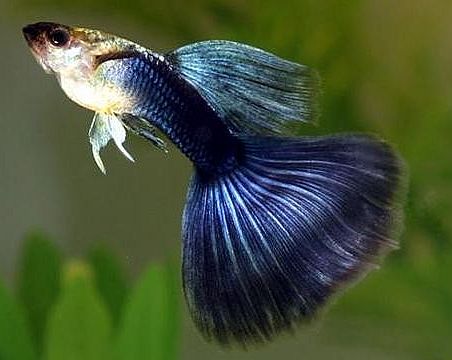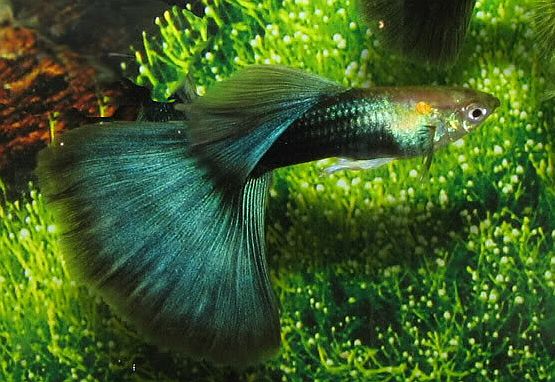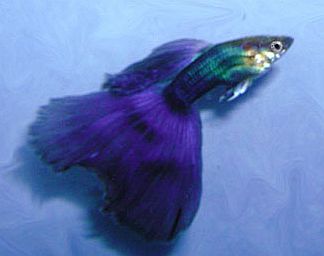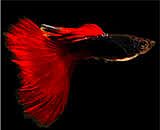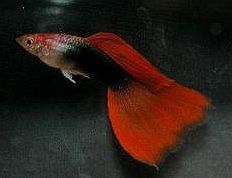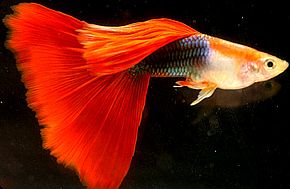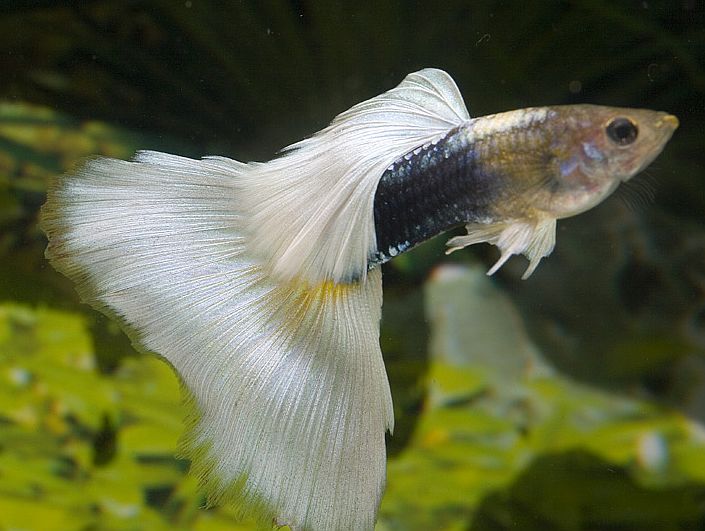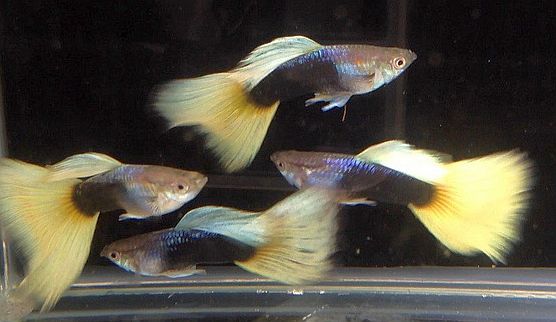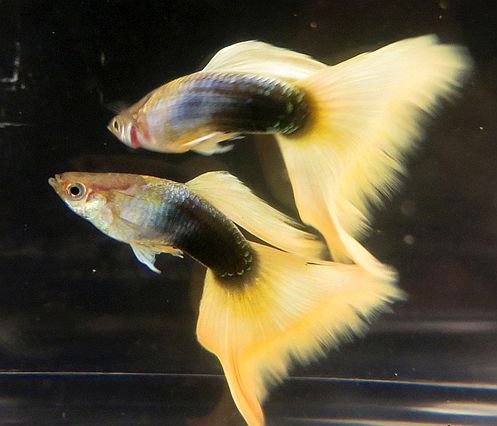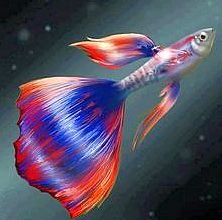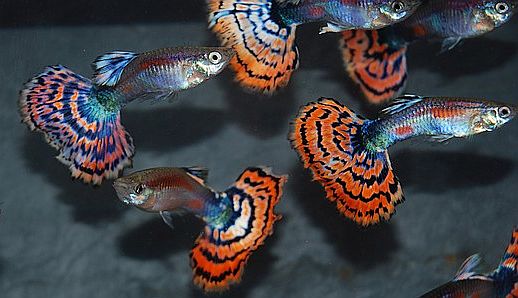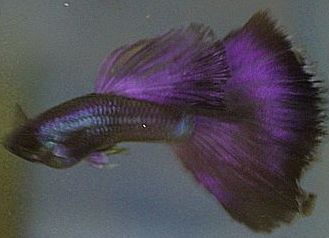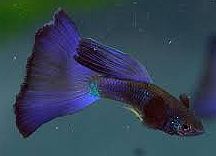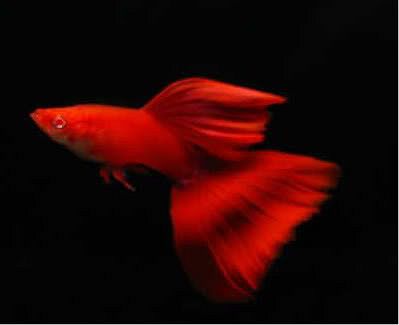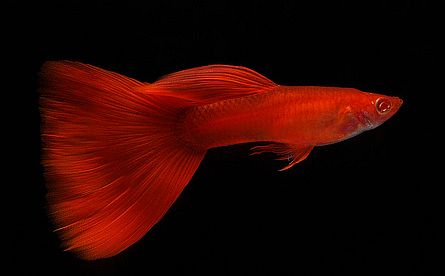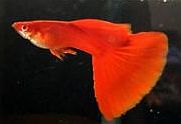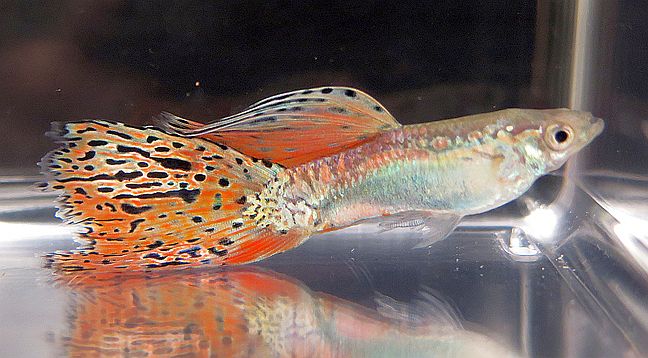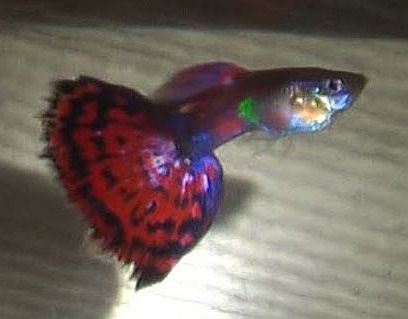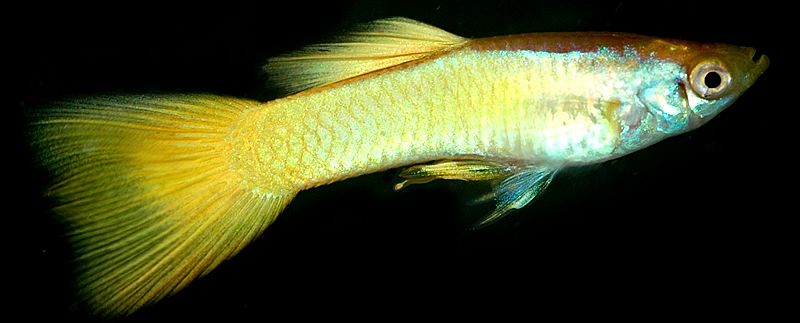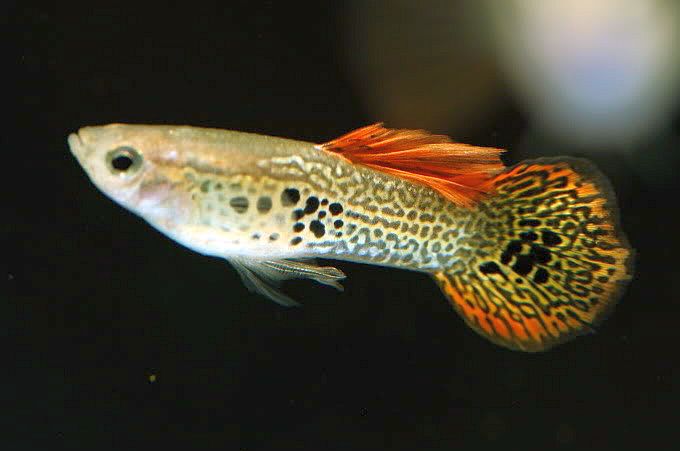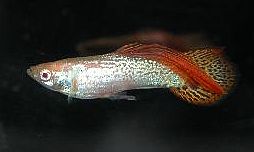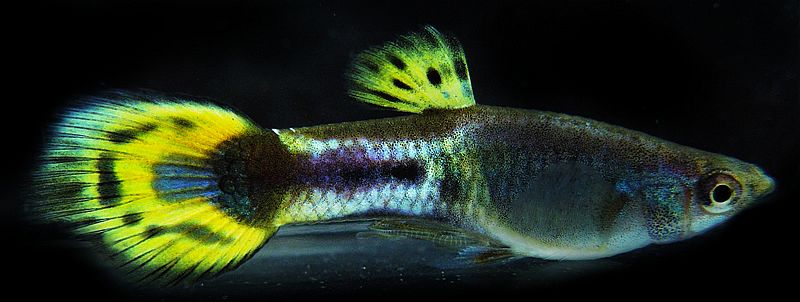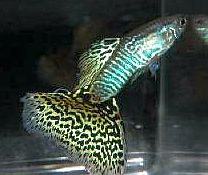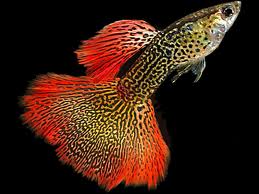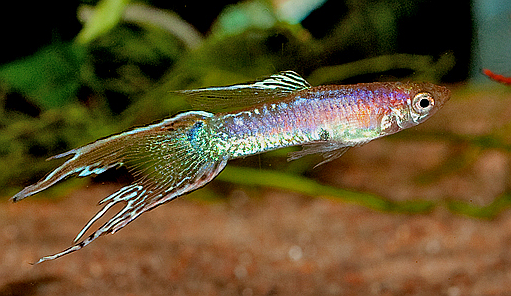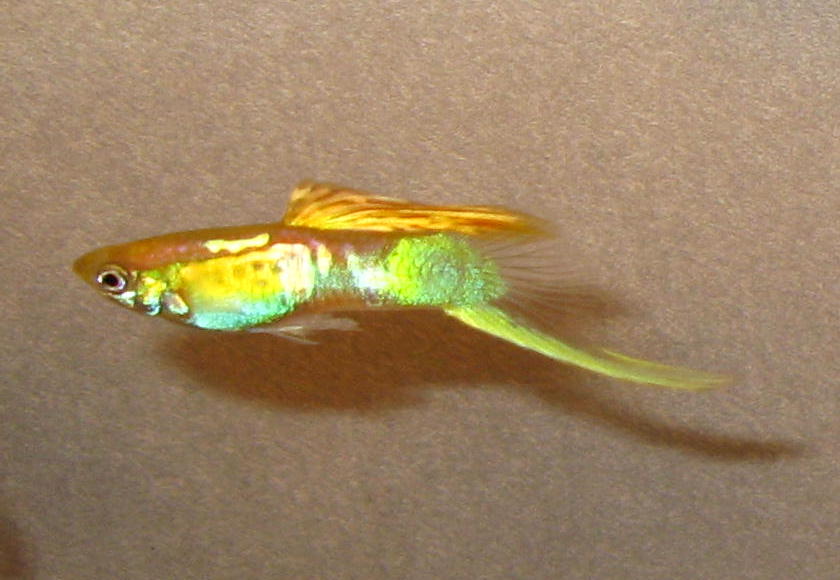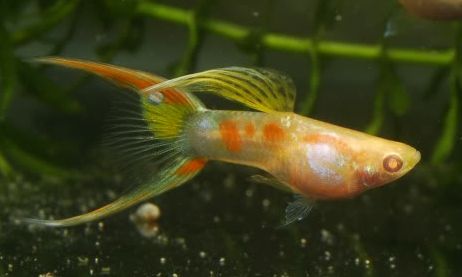The common Guppy (Poecilia reticulata), is also known as the millionfish, mosquito fish, or rainbow fish by tropical fish keeping enthusiasts. They are a highly adaptable species that can survive and even thrive in environments that many other tropical fish species would be unable to tolerate.
Although the natural range of Poecilia reticulata is in northeast South America; they have been introduced into habitats around the world for various purposes, primarily mosquito control. Guppies are native to Antigua and Barbuda, Barbados, Brazil, Guyana, Jamaica, the Netherlands Antilles, Trinidad and Tobago, the U.S. Virgin Islands and Venezuela.
Many countries have introduced guppies into their environment to slow down the spread of Malaria by controlling mosquito populations, however in many instances, guppies negatively impacted the native fish populations.
Because of their hardiness and tolerance to salt water, they have populated not only their natural range but also many brackish water rivers and streams. Wild guppies tend to be more abundant in the pools of smaller streams than in the larger, deeper water, fast flowing rivers of their range.
Wild Guppies are generally grey in body coloration however, wild males can have spots, stripes, or splashes of different colors over their grey bodies.
Male guppies are much smaller than females; however their dorsal and caudal fins are always much longer and more colorful. Female guppies are larger, more drab in color, and do not possess the ornamental fins of males.
In the wild, guppies feed on both animal and vegetable matter; primarily benthic algae, small crustaceans and insect larvae. In an aquarium environment, guppies should be fed an algae based flake food along with some freeze dried bloodworms, tubifex
, brine shrimp and micro pellets
. They need both algae based and meaty foods for proper nutrition.
Through selective breeding, literally hundreds of unique color strains of guppies have been developed over the years. These “Fancy Guppies” are bred to exhibit a plethora of colors, unique body color patterns, different shapes, body markings and sizes of caudal fins.
Some of these strains are listed below along with categories that distinguish them from each other:
Albino Guppies
Albino guppies exhibit the recessive albino phenotype trait (red eyes and the absence of black melanin) and appear in numerous color varieties.
Any Other Color (AOC)
Any other color guppies is a class of guppies that the International Fancy Guppy Association has set up to cover all color types that do not fit into any of their other delta color classes.
AOC BiColor Guppies
To be considered a BiColor guppy, the fish must have a distinct base color and a distinct secondary color that is at least 25% of the tail color. If a third color that is over 15% is present, the guppy is considered a multi colored guppy. Also, the dorsal fin in a BiColor guppy should have the same color and pattern in the tail of the fish. The AOC Bicolor class covers all BiColor types that do not fit in Blue, Green, or Red BiColor classes.
Black Guppies
The goal for breeders of Black guppies is for the fish to be completely black, with no secondary color.
Most Black guppies are either medium or small in size. When breeders attempt to breed larger sized Black guppies, the results are often the loss of the deep black color in the body and matching dorsal fin of the fish. Below are some examples of Black guppies.
Blue Guppies
Blue guppies as the name implies can range in color from a deep dark blue to a sky blue color. Males continue the blue body color into their fins but female blue guppies only show blue highlights in their fins.
Blue Green BiColor Guppies
Blue Green BiColor guppies are available in many types. The Blue Green, Blue, or Green color must be the dominate color over any secondary color in the fish’s tail. The color and pattern of the dorsal fin should be the same as the caudal fin in the fish.
A Blue Green BiColor guppy must have a base color of blue/green/ blue green with a secondary color that is at least 25% of the color of the fish’s tail. Both of the colors in a BiColor guppy must be distinct, and no other color that is more than 15% should be present or the fish is considered a multi colored guppy. Below are some typical examples of Blue Green BiColor Guppies.
Bronze Guppies
The Bronze Guppy is a genetic gold guppy with more than 25% of the gold color on the body with scales outlined in black.
Most Bronze Guppies have Green or Red BiColor tails. IFGA standards state that a Gold guppy must have at least 25% of its body showing the color of real gold metal on the body. The recessive bronze trait that edge scales in black make it eligible in the Bronze class. Below are some examples.
Green Guppies
True Green Guppies are a much sought after color strain. A true Green show quality guppy is extremely difficult to develop, consequently most Green guppies on the show circuit are green mixed with blue iridescence. These can actually be disqualified because the type of light and/or the angle of the light that may turn the fish blue, green, or purple. The females of true Green Guppy strains have green highlights in their fins. Below are some examples of true Green Guppies.
Half Black AOC
The is any half black body guppy that cannot be entered into the black class, or any other half black color class. The examples below are typical of Half Black AOC guppies.
Half Black Blue Guppy
The Half Black Blue guppy is a blue guppy with the half black body trait. Below are a few examples.
Half Black Green Guppies
The Half Black Green guppy is a Green guppy with the Half Black body trait. A difficult strain to maintain a dark half black body with good green colored fins.
Half Black Purple Guppies
The Half Black Purple guppy is a purple bodied guppy with the half black body trait. See the examples below.
Half Black Red Guppies
A Red Guppy with the Half Black trait is considered to be a Half Black Red guppy by the International Fancy Guppy Association. Some of these guppies are genetically gold in order to have a cleaner red tail but this degrades the desired dark Half Black body. The 1:1 proportion of body to tail length is also more difficult to retain with this type of guppy. Below are some examples of Half Black Red Guppies.
Half Black Pastel Guppies
Half Black Pastel Guppies have a half black body and any other solid pastel colored tail except yellow. Most fancy show guppies that are labeled Half Black Pastel are white pastel colored fish. The type of food fed to guppies can affect their color and this is especially true with the Half Black White Pastel guppy. The pure white color of their tails are definitely effected by the food they eat.
Half Black Yellow Guppies
The Half Black Yellow Guppy strain is a difficult line to maintain. They are strikingly beautiful fish that have a bright yellow tail and a contrasting Half Black body coloration. Here are a few examples of show quality Half Black Yellow Guppies.
Multicolor Guppies
Multicolor guppies ideally have three or more distinct colors that are equally distributed throughout the tail. To be considered a tail color, a true Multicolor Guppy must have at least 15% or more of the tail area that color and the dorsal fin should match the pattern and color of the caudal fin. Below are some typical examples of Multicolor Guppies.
Purple Guppies
Purple Guppies have a solid purple color in bvoth their caudal and dorsal fins.
Red Guppies
Red guppies come in a variety of body color types such as gold, gray, or albino. They generally have larger bodies and are slow in the development of fin growth.
The Gold and Albino body types of Red Guppy are the most popular because the black melanin is minimized or totally eliminated. This creates a cleaner red color strain. Color quality depends on the combination of basic red with background colors of blue, lavender, or yellow. Fancy Red Guppies on the show circuit range in color from orange to deep maroon. Below are some examples.
Red Bi Color Guppies
The Red Bi Color Guppy must have a base color of Red and a secondary color that is at least 25% of the tail color.
Both colors in the fish must be distinct. If another third color is present that is more than 15% of the total color, the guppy would be considered a Multi Colored guppy; not a Red Bi Color Guppy. The dorsal and caudal fins in the guppy should also be the same color and pattern.
Yellow Guppies
Yellow guppies are a striking strain that are genetically gold. The intense yellow color of these fish is difficult to maintain, as are their fins. Yellow Guppies are a medium size fish.
Female Show Guppies
Female show guppies frequently have large fins and bright fin coloration similar to those of wild male guppy stocks. To qualify for competition in an IFGA class, Female Guppies must show a gravid spot.
Because breeders have been so successful with breeding almost any color into guppies, it is virtually impossible to limit any strain of guppy to a single color type. Fancy Guppies are also differentiated by their fin and body markings, some of which are listed below.
- Snakeskin guppies have a chain like pattern on at least 90% of their body and fins.
- Grass guppies have fine black dots on their caudal and dorsal fins that look like grass seeds.
- Lace guppies have a finer, web like pattern similar to snakeskin guppies.
- Leopard guppies have rosette looking spots that can cover the tail and/or the body.
- Mosaic guppies have interconnecting spots/chain patterning on their tails that form an irregular pattern on the fish.
- Round Tail guppies have existed as one of the first guppy tail types to come from the wild type guppy.
- Swordtail guppies are bred in single or double sword tails. Ideally only the sword portion of the tail should be colored with 5 to 1 proportioned dorsal.
- Moscow guppies are also known as “chameleon guppies” in the hobby because of their ability to change color shades according to the mood of the fish. A defining characteristic of Moscow guppies is whether or not the color going through the body also reaches the fish’s head. Moscow guppies can be many colors (including red, black, blue, green, and purple) and they can be combined with other guppy strains. The Moscow gene is X linked.
Round Tail Guppies
The Round tail guppy is one of the first guppy tail types to come from the wild strains of guppy. It was first accepted into the IFGA as a guppy class in 2005 but was removed from available classes in 2007. It is still a popular type guppy with tropical fish keeping enthusiasts as you can see from the examples below.
Snakeskin Guppies
These pictures show guppies that carry the snakeskin genetic trait with a rosette pattern on the body.
The snakeskin trait is generally dominant and Y-linked, but some strains can be X-linked. Many strains also carry the dominant zebrinous trait that causes vertical bars on the peduncle area.
Swordtail Guppies
Swordtail Guppies are bred with single or double sword tails. They are relatively long lived compared to Delta Tailed guppies. The ideal show fish has only the sword portion of the tail colored with a 5 to 1 proportioned dorsal.
Guppies vary in size depending on the strain but males are typically 1/2″ to 1.5″ long and females slightly larger at 1 1/4″ to 2 1/2″ long.
All domestically bred Guppies are hardy, colorful, and will add a degree of brilliance and excitement to any peaceful community aquarium. Because of their hardiness, peaceful nature, and rapid growth, Guppies make an excellent starter fish for beginning tropical fish keeping enthusiasts.
Guppies are highly prolific live bearers and are easy to breed in an aquarium environment. The gestation period of female guppies is anywhere from 21 to 30 days. Once inseminated, the females can store sperm in their ovaries and gonoducts, and if necessary will continue to fertilize their eggs for up to eight months without having another male present.
Guppies have been hybridized with various Sailfin Molly species and with Endler’s live bearer (Poecilia wingei).
In an aquarium environment, Guppies prefer hard water with a temperature between 78 and 82 °F and salt levels equivalent to one tablespoon for every 5 gallons of tank water. Guppies can easily tolerate salinity levels of up to 150% of normal seawater, which is why they are occasionally housed in marine community tanks.
Although nipping behavior is occasionally observed between male guppies and other fast swimming species, Guppies are generally a peaceful fish preferring to shoal with others of their own species. They should never be kept alone in a tropical fish tank.


